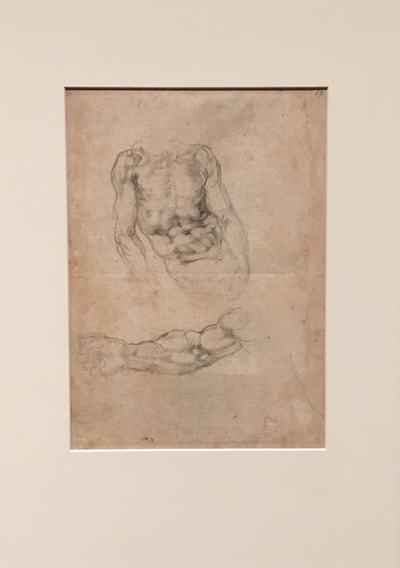|
On a recent trip to New York City, I saw a wonderful exhibit at the Metropolitan Museum of Art on the drawings and etchings entitled, “Michelangelo: Divine Draftsman & Designer". I couldn't help but be reminded that artists, as a class, work in very similar ways to prepare to do their work. This includes all types of art - music, dance, visual art, architecture, performance art, and many others. One doesn't simply declare that they are “an artist”, and immediately crank out works that are mature, and meaningful. In this exhibit, you could see Michelangelo’s meticulous process, similar to what we do as musicians. Young musicians, often collaborating with a master in the field, spend hour upon hour in the practice room perfecting our art, learning to shape the instrument into our vision. This can take years. No, really - years! Brass players, for example, often start around age 8, and it takes them 15-20 years to gain the proficiency required to work in the field. Sometimes we’ll work on a phrase over and over again until we get it just the way that we want it to sound. Maybe an articulation is elusive, or there is a pitch issue that we’ve been trying to sort out. Our focus could be tone quality, or dynamics - really anything could take our attention for hours. Visual artists do this as well, often spending hours working out the details before they create the final work. For them, it can take years as well. I remember visiting the Museu Picasso in Barcelona – it displays art by Picasso from his formative years. Much of the work displayed was portraits, which is how he made his living early in his career. It took him years to establish the style that made him famous later in life. Below are some of his famous earlier works - Science and Charity (1897), Man in Beret (1895), and Self-Portrait (1896). They are definitely not a part of his cubist period, which began in 1909. On an oddly related note, the Beatles had been preparing for years when they appeared live on The Ed Sullivan Show on February 9, 1964. They had spent 2 years (August 1960 to December 1962) honing their craft in Hamburg, Germany, and continued to concertize in Europe before coming to the US. But I digress. At the Met exhibit, they showed us Michelangelo's process as he worked it out. Below, for example, he is studying how to draw a torso and an arm for his, "Studies for The Last Judgement". Or his study for Cleopatra (1533-1534) All artists do this repetitive, painstaking work to attain mastery of their medium. I can only speak for myself, but those many hours in the practice room early in my career were some of the happiest, most joyful hours of my life – second only to the hours spent sharing the final artwork with an appreciative audience.
0 Comments
Leave a Reply. |
AuthorLawrence Isaacson is a conductor and educator based in Boston. Biography >> Archives
July 2018
Categories |







 RSS Feed
RSS Feed